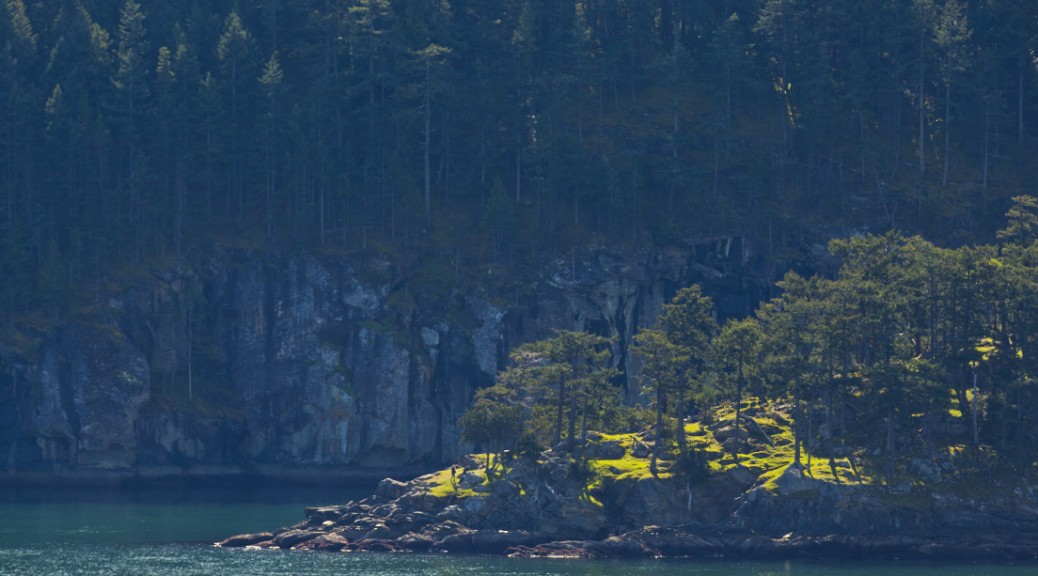Photo above: participants in the “Round the County Sailing Race”, rounding the Lighthouse Point, Patos Island, WA. Photo taken from East Point, Saturna Island, BC, roughly 6 km away…
On Sunday afternoon, I decided to go to East Point, to get some fresh air (and oh yes, the air certainly was fresh…). Although rain was threatening, I went because someone pointed out that a major sailing race was underway in the Orcas islands. The header photo above is the best shot I could get, from 6km away…
Above: a straggler, way behind the rest of the participants…
A good breeze was flowing through and I found a large gathering of gulls, all over the rocks.
Gulls everywhere, resting while facing the wind.
Above: I think these are junior (not quite mature) herring gulls…
It was like a gull convention. Or the prelude to The Birds (you know, the Hitchcock movie…).
And more coming…
And these caught my eye, because of their red beaks…
I had to look them up today: they are Heerman’s gulls, and these waters are probably their northernmost habitat on the Pacific Northwest.
There were all kinds of Harlequin ducks, fishing around the point. Above, a lovely couple. The gulls kept trying to fly close, land next to the ducks after they surfaced, to steal whatever they had caught…
Oops, the hen dove and the drake gets to pose for the camera…
Here is a harlequin hen, at the shore…
And then there were the little ones, the sandpipers, scurrying between the gulls. They are so tiny and quick, and their camouflage colours are so efficient that they are hard to spot…
Snack time…
After a couple of hours, my fingers started to feel frozen (note to self: bring gloves, next time), so I decided to head home.
I leave you with a shot from the night before, a Saturday evening sunset minuet:







































